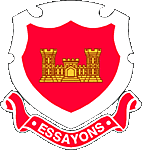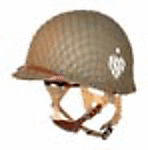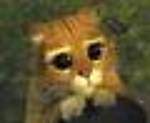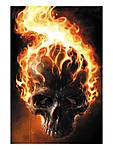Just a quick up-date. Not much progress on the StuG, really; I've kinda been swamped with some other projects. Still, I've managed to make a little head way, so, FWIW....
I've been working on the terrain module for the base. (Some previous posts show the intial layout and preparation work.) After adding a coat of plaster of Paris to refine the contours of the terrain, I've now added a layer of Celluclay:

The photo above shows this after it dried. After drying, I applied the vegetation. I'm going for a mid-winter look with the road muddy from an earlier snow fall which is melting in the day, but re-freezing at night.
Here's the next step, the vegetation (dead grass and weeds along the verges at the side of the road):

I've also added a couple of washes made with Future floor wax thinned about 50-50 with water. I want the low spots in the ruts and ditches to look wet, but the tops of the mud ridges should only look damp and not shiny. I plan on building up the layers of the thinned Future gradually so as to not over-do the glossy, wet look.
Next up will the the melty snow mostly over the dead grass and weeds with some chunks of ice and snow along the edges of the road.
While waiting for various steps with the base to dry, I've also been workig on the road signs.
My researched me that the StuG IV that I was building was lost on the night of 18-19 Jan '45 while trying to cross the Rgilewka river in Western Poland. This vehicle was recovered from the river bottom about 10 years ago and restored to running order. It's now on display at the Museum in Poznan, Poland.
Here's a sketch map of the area (as it looks today):

I wanted to try to establish and illustrate the historical area where my model was operating right before it was lost in the river, so assuming that the StuG got to the river crossing by driving down the rail road tracks, I chose a hypothetical location for my vignette at the last road-rail track crossing to the east of the river crossing.
This is at the village of Barlogi, Poland. I was not able to find any period photos of this area, so I decided to model the crossing as an unimproved dirt road between Balogi and the next village to its south, Ponetow Dolny.
To establish this location, I will add a road sign indicating the the village of Barlogi, a warning for the RR crossing, and the distance and name to the next village, Ponetow Dolny.
My research further led me to learn that after the Germans occupied Poland in 1939, they "Germanized" all of the Polish place names and re-did all of the road signs. I wa able to determine that the actual name given by the Germans to the village of Ponetow Dolny was "Lockheim," but the Germanized name for Barlogi has been lost in time. I did discover that the Catholic church located in the village is named "St. Roch," so I thought I wouldn't be too far off the mark using that Anglo-Saxon name on my wartime road sign. This allowed me to illustrate the Germanization of the place names on the vignette and still remain at least historically plausible (I hope!).
Anyways, that was a long explanation for the next photo with is the intial work on the road signs:

The names are made of Woodland Scenics dry transfers on clear water-slide decal paper. These will be added the signs after they are painted. The signs are .010 styrene card. The place names will be painted an orange-yellow with black borders. The RR X-ing sign will be white with a red border. These color schemes also match my research for road signs used during the German WWII occupation of Poland.
So, that's all for now. Hopefully the next up-date will show the snow and completed road signs, and if I'm lucky, I might even have the StuG finally on it!
Happy modeling,
































































